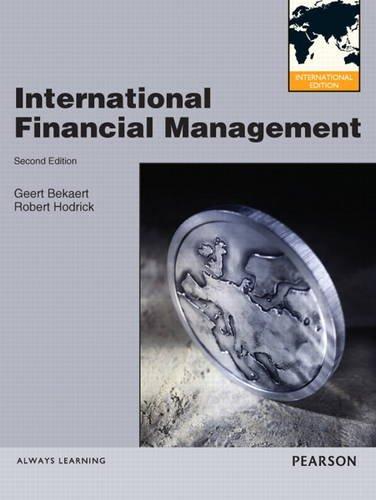An engineer, is considering two investment alternatives (A and B) having the cash flow shown in the table below. The two alternatives are concerned with $100,000 investments that last 5 years. The cash flows shown are after applicable taxes and other expenses have been deducted. Both investments result in $150,000 being received over the 5-year period; hence, a net cash flow of $50,000 occurs in both cases. Attach your Excel Calculations (If NOT Attached, or you do not show the steps in details for each figure you give you will not get the points for calculations and related answers)
 1. Construct the Cash Flow Diagram for each alternative 2. Without conducting calculations which investment is preferred without considering TVfM ? Why? 3. Without conducting calculations which investment is preferred considering TVfM?. Why? 4. Calculate (showing your steps) the NPV of each alternative. Which one is the preferred alternative and why assuming a compound interest rate of 5% per year. ? 5. Calculate (showing your steps) the IRR for each alternative. Based on the IRR calculations, which alternative is preferred? 6. How would the change in interest rate affect your decision in part 4?
1. Construct the Cash Flow Diagram for each alternative 2. Without conducting calculations which investment is preferred without considering TVfM ? Why? 3. Without conducting calculations which investment is preferred considering TVfM?. Why? 4. Calculate (showing your steps) the NPV of each alternative. Which one is the preferred alternative and why assuming a compound interest rate of 5% per year. ? 5. Calculate (showing your steps) the IRR for each alternative. Based on the IRR calculations, which alternative is preferred? 6. How would the change in interest rate affect your decision in part 4?
An engineer, is considering two investment alternatives (A and B) having the cash flow shown in the table below. The two alternatives are concerned with $100,000 investments that last 5 years. The cash flows shown are after applicable taxes and other expenses have been deducted. Both investments result in $150,000 being received over the 5-year period; hence, a net cash flow of $50,000 occurs in both cases. Attach your Excel Calculations (If NOT Attached, or you do not show the steps in details for each figure you give you will not get the points for calculations and related answers) End of Year (EOY) 0 1 2 3 4 5 $100,000 $10,000 $20,000 $30,000 $40,000 $50,000 B -$100,000 $50,000 $40,000 $30,000 $20,000 $10,000 1. Construct the Cash Flow Diagram for each alternative 2. Without conducting calculations which investment is preferred without considering TVM? Why? 3. Without conducting calculations which investment is preferred considering TVfM?. Why? 4. Calculate (showing your steps) the NPV of each alternative. Which one is the preferred alternative and why assuming a compound interest rate of 5% per year. ? 5. Calculate (showing your steps) the IRR for each alternative. Based on the IRR calculations, which alternative is preferred? 6. How would the change in interest rate affect your decision in part 4? An engineer, is considering two investment alternatives (A and B) having the cash flow shown in the table below. The two alternatives are concerned with $100,000 investments that last 5 years. The cash flows shown are after applicable taxes and other expenses have been deducted. Both investments result in $150,000 being received over the 5-year period; hence, a net cash flow of $50,000 occurs in both cases. Attach your Excel Calculations (If NOT Attached, or you do not show the steps in details for each figure you give you will not get the points for calculations and related answers) End of Year (EOY) 0 1 2 3 4 5 $100,000 $10,000 $20,000 $30,000 $40,000 $50,000 B -$100,000 $50,000 $40,000 $30,000 $20,000 $10,000 1. Construct the Cash Flow Diagram for each alternative 2. Without conducting calculations which investment is preferred without considering TVM? Why? 3. Without conducting calculations which investment is preferred considering TVfM?. Why? 4. Calculate (showing your steps) the NPV of each alternative. Which one is the preferred alternative and why assuming a compound interest rate of 5% per year. ? 5. Calculate (showing your steps) the IRR for each alternative. Based on the IRR calculations, which alternative is preferred? 6. How would the change in interest rate affect your decision in part 4
 1. Construct the Cash Flow Diagram for each alternative 2. Without conducting calculations which investment is preferred without considering TVfM ? Why? 3. Without conducting calculations which investment is preferred considering TVfM?. Why? 4. Calculate (showing your steps) the NPV of each alternative. Which one is the preferred alternative and why assuming a compound interest rate of 5% per year. ? 5. Calculate (showing your steps) the IRR for each alternative. Based on the IRR calculations, which alternative is preferred? 6. How would the change in interest rate affect your decision in part 4?
1. Construct the Cash Flow Diagram for each alternative 2. Without conducting calculations which investment is preferred without considering TVfM ? Why? 3. Without conducting calculations which investment is preferred considering TVfM?. Why? 4. Calculate (showing your steps) the NPV of each alternative. Which one is the preferred alternative and why assuming a compound interest rate of 5% per year. ? 5. Calculate (showing your steps) the IRR for each alternative. Based on the IRR calculations, which alternative is preferred? 6. How would the change in interest rate affect your decision in part 4?





